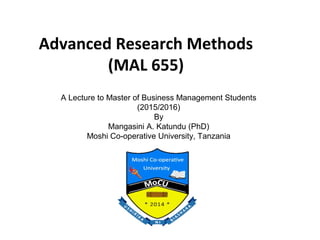This document provides an overview of a lecture on advanced research methods given to master's students. It discusses key concepts in research including the nature of business research, the role of theory, types of theories like the theory of reasoned action and theory of planned behavior, research paradigms, inductive vs deductive reasoning, ethical issues, and variables and their levels of measurement. Alternative non-scientific ways of knowing like authority, tradition and personal experience are also contrasted with scientific inquiry.















































































